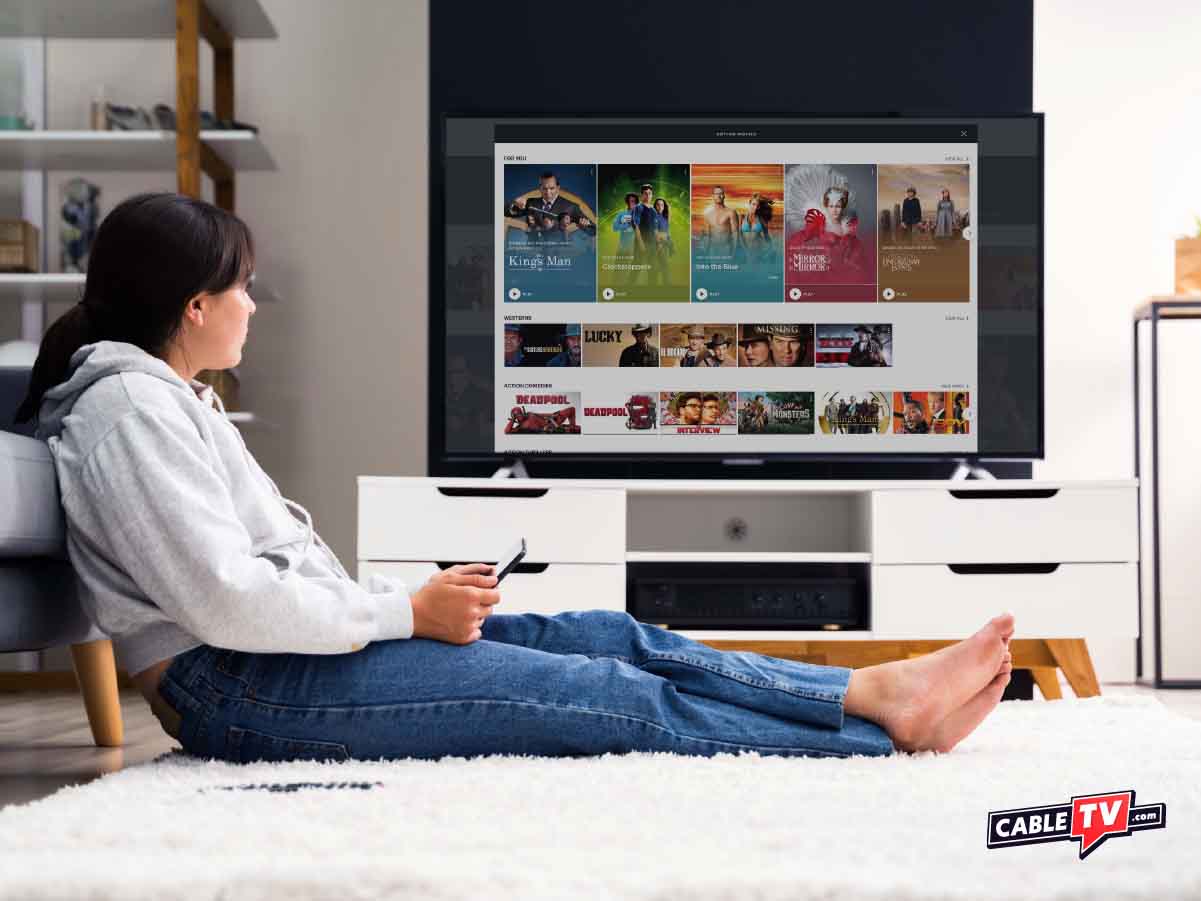Over-the-top (OTT) video streaming and IPTV services are rapidly gaining market share as more consumers spend their nights watching the latest series on Netflix, Amazon Prime, Disney+, HBO Max, or one of the many other streaming services available.
Over the last decade, Internet Protocol Television, or IPTV for short, has had a major impact on how users consume content. In addition, the online streaming content market which is powered by Over-the-top (OTT) video technology have changed how users consume entertainment content, particularly video, over the last decade.
The online video streaming services contain a large library of Arabic movies and, TV shows, and programs available for users to watch whenever and wherever they were.
The big question now is how is altering the IPTV and streaming services are changing the way we watch “television” and what these changes could imply for future generations of media consumers. Continue reading to learn more.
People would settle in weekly to catch up on their favorite television series for years. This somewhat religious approach to media consumption insured not only that people watched a network’s channel, but also that advertisers had a steady audience to promote to. However, OTT video streaming provides streaming video services for thousands of TV shows and movies without requiring users to see third-party advertising.
Traditional television has been dwindling for a number of years as a result of shifting global trends and technological developments. The omnipresent availability of the Internet has increased access to everything, including television.
Although IPTV delivery of content differs from online video-sharing platforms such as YouTube and over-the-top (OTT) services such as Netflix, it shares many of its benefits. IPTV, for example, allows customers to subscribe to video-on-demand (VOD) content and watch live broadcasts. This makes it possible for people to watch their favorite episodes whenever they want while still being able to watch live events and programming on traditional television.
In light of this flexibility, IPTV outperforms traditional television and is seen as the television of the future.
Thus, Businesses are capitalizing on this trend to increase brand recognition and deliver value to their customers. As a result, there is an increasing demand for OTT channels that can consistently and securely handle OTT broadcasts.
OTT streaming platforms and IPTV services are more popular than ever since they put more control in the hands of both viewers and broadcasters. Thanks to OTT and IPTV technology, both the creators and consumers are free from the regulations and restrictions of television networks.
Numerous companies take full advantage of this chance to monetize their video content and develop OTT broadcasting services and platforms.
OTT platforms refer to streaming services that deliver video content over the internet, bypassing traditional television networks. Examples of popular OTT platforms include Netflix, Amazon Prime Video, Hulu, and Disney+. These platforms offer a wide range of content, including movies, TV shows, documentaries, and original programming. They allow viewers to access content on-demand, giving them the flexibility to watch their favorite shows or movies at their convenience.
IPTV, on the other hand, utilizes Internet Protocol technology to deliver television programming over the internet. It enables users to stream live TV channels and on-demand content using their internet connection. IPTV services often offer a larger selection of channels compared to traditional cable or satellite providers and allow viewers to customize their channel lineup based on their preferences.
Both OTT and IPTV services have transformed the broadcasting industry in several ways. Here are a few key advantages they offer:
- Flexibility and convenience: Viewers can access content anytime, anywhere, and on various devices such as smartphones, tablets, smart TVs, and computers. They are not tied to fixed schedules and can watch their favorite shows at their convenience.
- Wide range of content: OTT platforms and IPTV services offer a vast library of content, including movies, TV series, documentaries, sports, and more. This extensive selection caters to diverse interests and preferences, giving viewers the freedom to choose what they want to watch.
- Personalization and recommendation: These platforms use algorithms and user data to provide personalized recommendations based on viewers’ preferences and viewing history. This helps users discover new content that aligns with their interests.
- Cost-effectiveness: Some OTT platforms and IPTV services offer subscription-based models that are often more affordable than traditional cable or satellite TV packages. Users can choose the subscription plan that suits their budget and preferences.
- Global reach and accessibility: With OTT and IPTV services, content creators can reach a global audience without the limitations of traditional broadcasting networks. This enables the distribution of content to diverse markets and demographics.
- Monetization opportunities: OTT platforms and IPTV services provide avenues for content creators and broadcasters to monetize their content through subscription fees, advertisements, or a combination of both. This allows them to generate revenue and invest in the production of high-quality content.
Overall, the rise of OTT streaming platforms and IPTV services has disrupted the traditional broadcasting landscape by empowering both content creators and consumers. They offer more control, convenience, and a diverse range of content, contributing to the growth and evolution of the entertainment industry.



































